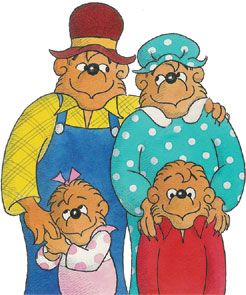Vicarious Consumption? Try Vicarious Happiness
When Gary Cross proposes that Christmas has sequestered from a time of celebrating the “nuclear family” (59) to a display of “vicarious consumption” through gift giving, I have to disagree. This view is vastly too cynical of the American people. A people that donated $290.89 billion to charities in 2010 (nps.gov), has companies such as Macy’s with their “Make a Wish, Believe” campaign, and that are emotionally moved by commercials that epitomize the “giving” Christmas spirit (tear jerker warning.) The underlying motivation around Christmas is not to display how well off one is financially. The underlying motivation is too make those around you, and especially children, happier. Witnessing the jubilance in children around Christmas is guaranteed to make your life more blissful. This eagerness to make one’s children joyful may seem to accumulate in the form of “vicarious consumption” but that is because in some instances to make younger children happier it requires buying the most up to date gadget or toy. Therefore, the end result of the gift is a display of proof, that yes, you can provide your child with happiness but the primary motivation was not to “peacock” your wealth, it results as a byproduct. A good analogy would be when you drive your car. The intentions are good. You want to go to work and add to society. However, the result of fossil fuels going into the air still occurs. You cannot stop this end result and you accept it without conscious thought. The same is true with the byproduct, of providing your children with merriment, being produced as “vicarious consumption”.
This argument is hard to see today sometimes because the advertisers try too engulf us into this competitive “buy everything before everyone else” mindset around Christmas. From Targets “Black Friday Holiday Sales” commercials, to Best Buy’s “Game On Santa” campaign, it seems as though the media wants us competing for all that is consumer goods. Say you are persuaded by these ads, is it even a bad thing? We have to remember, that Target and Best Buy are not just abstract companies. Companies are made of people. When the company sales go down, employees get laid off and then those employees cannot provide a Happy Christmas for their children. It is the companies job to drive sales in whichever way they feel is best for this purpose.
To conclude, I post one last link of a kid going nuts over receiving a new Nintendo 64. After watching this video, if you still believe “vicarious consumption” is the main motivator in Christmas purchases, send me a PM. I would love to engage in some insightful discussion.
(*Final Note-in the first paragraph I state that kids want the newer, up to date gadgets and toys. This is not a bad thing. This is a natural phenomenon in humans. Without it we do not have WordPress as a medium to even discuss such issues. The desire to want newer and better materials leads to innovation that in the end will help everyone for a “rising tide raises all boats”) Read more
Read more




